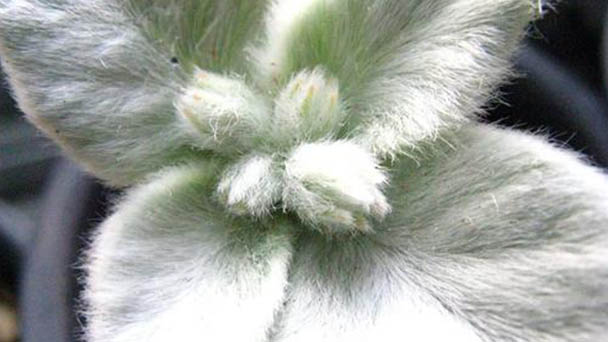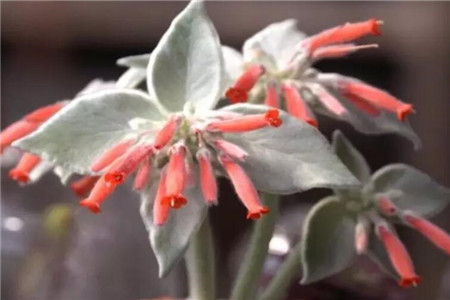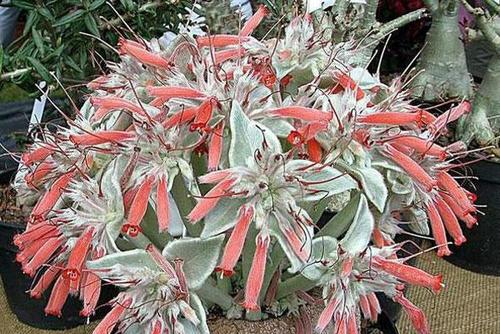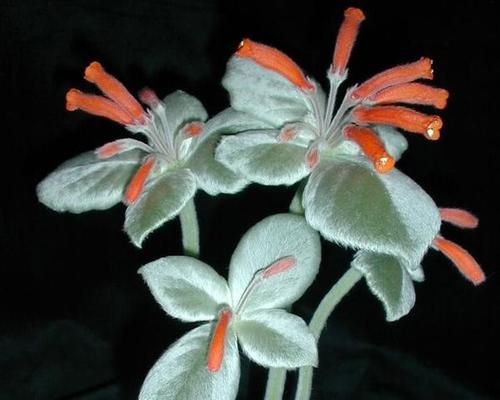Sinningia Leucotricha Profile
Written by Maggie
Oct 26 2021

Sinningia Leucotricha, commonly called Brazilian Edelweiss, is native to the cliffs of the Brazilian plateau. Though Sinningia Leucotricha likes a warm and dry environment with sufficient sunshine, it can grow normally in half shaded places. Sinningia Leucotricha is drought resistant, afraid of water, not cold, and requires a large temperature difference between day and night, usually can be placed in the room with sufficient light for maintenance. Sinningia Leucotricha is a succulent plant with excellent flowers and leaves. Sinningia Leucotricha is used to decorate windowsills, balconies, indoor shelves, tables and tables, etc. Sinningia Leucotricha is natural and fresh with a unique effect.
Sinningia Leucotricha Picture

Sinningia Leucotricha Info
| Botanical Name | Sinningia Leucotricha |
| Common Names | Brazilian Edelweiss |
| Plant Type | Succulent |
| Growth | Determinate |
| Habit | Stems upright with 2-3 leaf pairs |
| Leaves | Green, densely covered with silvery hairs |
| Bloom time | Blooms in spring-summer |
| Flower color | Salmon pink to orange-red, tubular |
Morphological Characteristics of Sinningia Leucotricha
Sinningia Leucotricha has bulbous or sweet potato fleshy tuberous roots, with fibrous roots, clustered green branches 20 -- 30 cm high at the apex, new leaf buds emerging from them, branches green, many clustered, adult plants usually up to 20 -- 30 cm high, some even higher. Leaves on upper branches, elliptic, reciprocal, apex acute, green, 8-12 cm long and 4-6 cm wide, leaves and young stems densely covered with short white hairs, glossy white hairs, ca. 0.3-0.5 cm long. Peanuts are at the top of the branches, a number of clusters open, a thin cylinder, 3-4 cm long, about 2 cm in diameter, petals slightly curved apex, red, covered with white tomentose, late spring to early autumn open, spring flowering peak.
Sinningia Leucotricha Original Habitat
Sinningia leucotricha is native to the cliffs of the Brazilian plateau. It likes a warm and dry environment with sufficient sunshine, and can grow normally in half shade, drought resistant, afraid of water, not cold. it requires a large temperature difference between day and night, usually can be placed in the room with sufficient light for maintenance.
Sinningia Leucotricha Propagation
The propagation of Sinningia Leucotricha uses the seeding propagation method. Although self-pollination can also produce seeds, in order to improve the seed rate and seed quality, it is better to carry out artificial cross-pollination when the flowers are in full bloom. The seeds should be collected in time after maturity to avoid scattering. The seed life is short, but increases with the increasing mining, due to the tiny seeds, sowing can be sprinkled on a bowl, covering the transparent plastic or glass. To keep wet, a shallow water pot can be carried in a bird bath culvert filling method, make the water slowly dry wet earth from pelvic floor. The germination temperature should be 25℃, 10-15 days after sowing. When seedlings grow 4 true leaves, separate seedlings and transplant. After planting, water in time to avoid drought. After 2-3 weeks of plant root recovery, apply liquid fertilizer every 15 days or so. When the bulb is about 1 cm long, plant again. After 1 year of growth, the bulb can grow to about 3 cm, and can be colonized in small pots. After two more years of cultivation, flowers will bloom.

How to grow and care for Sinningia Leucotricha
1. Soil Care
The soil requirements of Sinningia Leucotricha are not strict, generally suitable soil can be planted succulent.On the whole, grasp two points; Loose and breathable, rich in organic matter. It can be used to add a third of the perlite as the matrix, can add a small amount of calcium superphosphate.
2. Lighting Requirements
Sinningia Leucotricha prefers a dry, semi-sunny environment. Avoid harsh sunlight at noon and in the west. A little more sunlight is more conducive to growth and development.
3. Temperature Care
In spring, the temperature is around 15 degrees, and the new buds on the bulbs begin to germinate. Growth is best at 25 to 30 degrees.Over 30 degrees growth slows down, if it is still in the strong light is easy to sunburn, so in summer it is better to put it in a cool place half shade.
4. Humidity Care
The moisture requirement of the soil is to see the dry water, can not make the flowerpot active water, pot soil ventilation is good is very necessary.
Different from other plants, Sinningia Leucotricha has a high requirement of air humidity. During curing, water should be sprinkled around the plant, or wet sand or birdbasin should be placed under the flowerpot, and the water should not be sprinkled on the leaves. In the middle of summer, water should not be watered at noon, especially when the water temperature is at the bottom.
5. Fertilizer
Generally do not need to fertilize Sinningia Leucotricha, such as the use of flowers can bloom early.It is best to use decomposed organic manure, such as sheep manure, chicken manure, etc. Then mixed with cake mooring, easy to supplement trace elements and nitrogen fertilizer, nutrient comprehensive. In the addition of superphosphate, and added phosphorus and calcium, so that plants grow well, easy to blossom, usually fertilizing with multi-element compound fertilizer. Organic manure leaches can also be used.Adult plants as far as possible without high nitrogen fertilizer, if possible, with flower treasure diluent. Of course not can also, fertilization can not let the fertilizer liquid fell on the leaves, and the bulb, do thin fertilizer frequently, must not be impatient, resulting in fertilizer harm.
6. Dormancy Care
At the end of autumn, the leaves and stems dry up and the plant enters a dormant state. The dormant soil must be kept moderately dry, otherwise the balls will rot, and the maintenance management of non-dormant plants will be drier than usual.
Sinningia Leucotricha Benefits
Sinningia Leucotricha is a succulent plant with excellent flowers and leaves. It is used to decorate windowsills, balconies, indoor shelves, tables and tables, etc. It is natural and fresh with a unique effect.

Latest Updated
- Benefits of Bugleweed - 7 Science-backed Health Benefits
- Bugleweed Dangers & Side Effects - Is It Poisonous?
- How to Plant Evergreen Trees - What You Should Know
- When to Plant Evergreens - Grow Guide for Evergreen Trees
- 12 Wonderful Evergreen Shrubs for Your Garden
- 12 Popular Evergreen Plants with Pictures for Beginners
- When And How To Prune A Lilac Bush Like a Pro
- How to Grow & Care for Lilac Vine (Hardenbergia Violacea)
- Japanese Lilac Tree (Syringa Reticulata) Care & Propagation Guide
- Shumard Oak Pros and Cons - What to Know
Popular Articles
- Winter maintenance of Antirrhinum Majus
- How to Grow Terminalia Mantaly Tree
- How to Grow and Care for Crossostephium Chinense
- How to grow Antirrhinum Majus in spring
- Peristeria Elata (Dove Orchid) Profile: Info & Care Guide
- Underwatered Snake Plant (Sansevieria Trifasciata) - Signs And How To Fix
- How to Care for Brazilian Jasmine Plant (Mandevilla Sanderi)
- How to Grow & Care for Graptopetalum Purple Delight in Summer
- Rosa Chinensis (China Rose): Plant Growing & Care Tips
- How to Care for Baby Sun Rose (Aptenia Cordifolia)